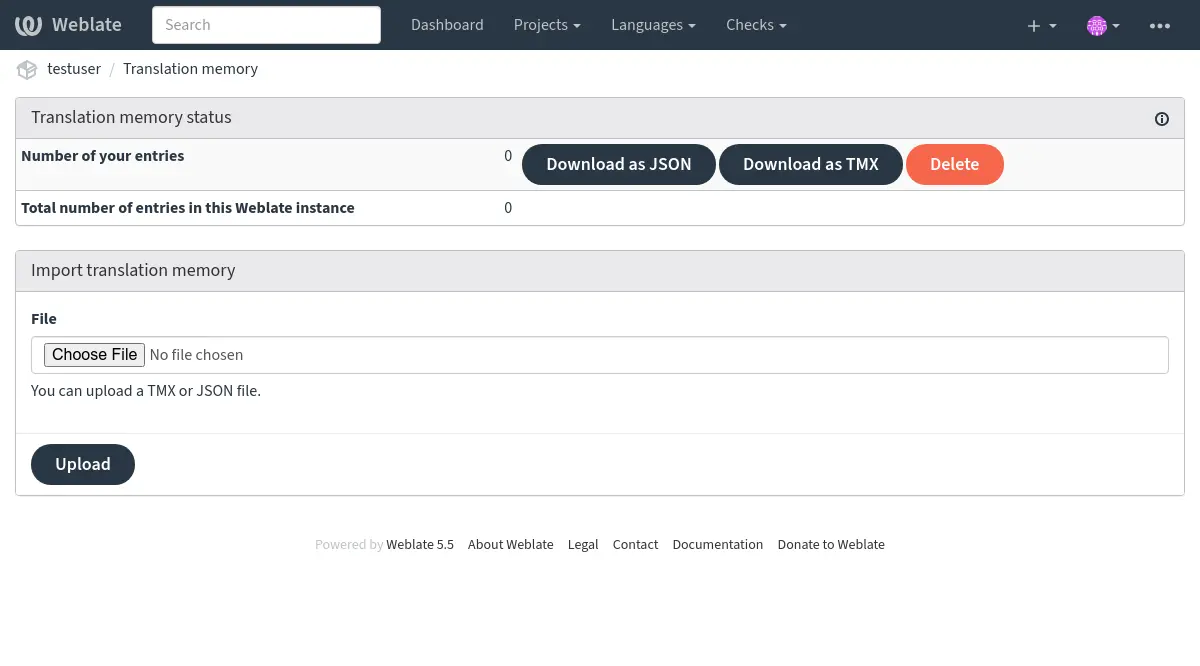Memoria de traducción¶
Weblate comes with a built-in translation memory consisting of:
Manually imported translation memory (see Interfaz de usuario).
Automatically stored translations performed in Weblate (depending on Translation-memory scopes).
Traducciones pasadas importadas automáticamente.
El contenido de la memoria de traducción puede aplicarse de dos maneras:
Manually: in the Sugerencias automáticas view while translating.
Automatically: by translating strings using Traducción automática, or the Traducción automática add-on.
For installation tips, see Weblate Translation Memory, which is turned on by default.
Translation-memory scopes¶
The translation-memory scopes ensure privacy for different projects and users. Sharing of translations is also available.
Memoria de traducción importada¶
Importing arbitrary translation memory data using the import_memory
command makes memory content available to all users and projects.
Per-user translation memory¶
Stores all user translations automatically in the personal translation memory of each respective user.
Per-project translation memory¶
All translations within a project are automatically stored in a project translation memory only available for this project.
Managing the Translation Memory¶
Interfaz de usuario¶
Personal translation memory management is available by clicking the user avatar in the top-right corner of the UI and selecting «Translation memory» from the dropdown menu. Entries attributed to the user are listed in scopes – total, for each respective project, component, or language contributed to, with options to download (as JSON, or TMX) or delete them.
In the basic user interface you can manage per-user and per-project translation memories. It can be used to download, wipe or import translation memory.
There are multiple options to download the translation memory of the whole instance.
Consejo
Translation memories in JSON can be imported into Weblate, the TMX format is provided for interoperability with other tools.
Ver también

You can search for translations in the view built for this.
Admin interface¶
There is a platform-wide interface to manage the translation memory.
Added in version 4.12.
It has the same options as the user interface, but also allows rebuilding parts of or the entire translation memory. All old entries can be flushed and re-created from a component or project by selecting «Administration» from amidst the different tabs at the top of the screen, and then «Translation memory».
Interfaz de gestión¶
Several management commands can manipulate translation memory content. These operate on the translation memory as a whole, unfiltered by scopes (unless requested by parameters):
dump_memoryExporta la memoria a JSON
import_memoryImporta archivos TMX o JSON en la memoria de traducción
Added in version 4.14.
The Weblate API covers the translation memory. This allows automated manipulation for different purposes, or based on events in the translation cycle.